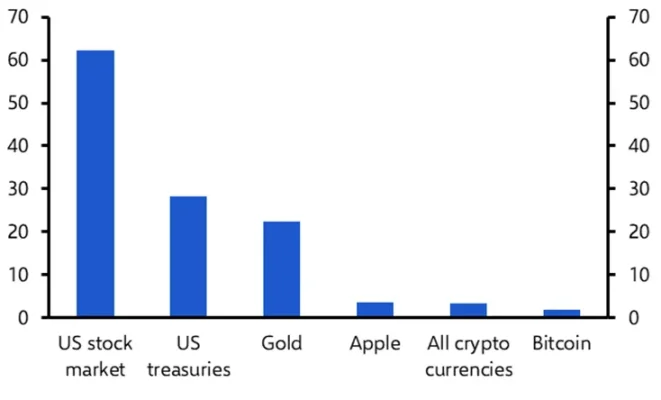Written by: Blockchain Knight
In 2011, a16z founder Marc Andreessen published an article titled "Software is Eating the World" in The Wall Street Journal, with the core argument being that software is changing the world at an unprecedented speed and scale.
Over the past decade, we have witnessed the rapid development of the internet, giving birth to numerous companies with market capitalizations exceeding $100 billion. Even now, this statement remains valid, as AI has begun to change the world in new ways. Some have even suggested that AI is eating software, but it seems that everything started in 2011, as popular platforms like Weibo and WeChat experienced explosive growth that year.
Now, more than a decade after the birth of blockchain technology, we are finally witnessing the beginning of "blockchain is eating the world," and this beginning is the realization of tokenization in the U.S. stock market.
Although the tokenization of U.S. stocks is no longer a novelty—having been partially realized even in the now-defunct FTX—the players entering the market now are no longer just companies from the pure crypto space, but well-known internet enterprises like Robinhood.
Last week, Robinhood announced the launch of stock token trading services based on the Arbitrum network in Europe, tokenizing shares of some private companies, including OpenAI and SpaceX. This news caused a significant stir in the financial sector and propelled Robinhood's stock price to a historic high.
Currently, the total market capitalization of the entire crypto market is about $3.4 trillion, while the total market capitalization of the global stock market is approximately $135 trillion, a difference of nearly 40 times.
Conversely, the ultimate ceiling for stock tokenization is $135 trillion, and as long as that market cap continues to grow, the ceiling will be broken.
However, the current market share may be less than 0.1%. It will only be considered a true explosive growth for the industry when it surpasses 3%.

This is the future that these emerging trading companies are targeting, and it is the true growth point of blockchain.
If this logic holds and is realized, then the impact brought by blockchain and cryptocurrency will be no less than that of "software is eating the world."
It is expected that the next 1-2 years will be a period of wild growth in this field, with more companies entering the market, which will also force some traditional stock service companies (TradFi) to transform. The door to this trend has already been opened.
But is stock tokenization the endpoint of blockchain? I believe this is just an important step among many.
At the end of last year, MicroStrategy's CEO Michael Saylor released a proposal titled "U.S. Digital Asset Framework, Principles, and Opportunities," in which he predicted that the global digital capital market could grow from $20 trillion to $280 trillion, and the digital asset market (excluding Bitcoin) could grow from $1 trillion to $590 trillion.
Currently, we face three important turning points: one is the global embrace of stablecoins, whether in the West or the East; the second is the continuous growth of on-chain government bonds and money market funds, commonly referred to as RWA; and the third is the beginning of stock tokenization.
The ultimate scale mentioned by Michael Saylor refers to the market of all these assets once they are on-chain, and the potential arrival of true "everything on-chain"—after all, this term has been mentioned for years. From the bustling STO in 2018 to the current RWA and stock tokenization, we have finally reached a critical point. Although the journey ahead is still long and full of challenges, it is already underway.
While these figures may seem far-fetched now, it is akin to saying ten years ago that Bitcoin would reach $100,000—equally dramatic and absurd. Yet now it has reached $110,000 and continues to set new historical highs.
In the foreseeable future, we can see that blockchain is reshaping the presentation of assets and the way value is transmitted. Whether it will reshape the way information is conveyed remains to be seen; meanwhile, AI is reshaping the way information is captured and bringing about a transformation in productivity. Today, the technology tree is on the eve of an explosion.
Coincidentally, both technologies have been lurking for over a decade, from being overlooked to being filled with bubbles, and now to a revaluation of value. Perhaps it is time to unleash that "monster."
So, who will be the next major player to enter the stock tokenization space? We shall wait and see.
免责声明:本文章仅代表作者个人观点,不代表本平台的立场和观点。本文章仅供信息分享,不构成对任何人的任何投资建议。用户与作者之间的任何争议,与本平台无关。如网页中刊载的文章或图片涉及侵权,请提供相关的权利证明和身份证明发送邮件到support@aicoin.com,本平台相关工作人员将会进行核查。




